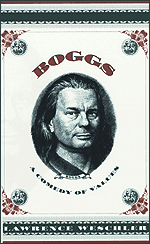Boggs bills—where money ends and art begins

As a recent post on Amazon’s book blog Omnivoracious points out, the volatile economic climate we’ve been living through the past few years makes it easy to question the real value of the dollar. When a financial crisis can put more Americans out of their homes than any of the major natural disasters that have hit the U.S. in the last decade, the nature of currency as an artificial construct is particularly obvious—and particularly ugly. But as it turns out, one contemporary artist, J.S.G. Boggs, has been using his craft to make a similar point in a somewhat more aesthetically pleasing, though highly controversial, way. As Omnivoracious blogger Tom Nissen writes:
J.S.G. Boggs is an artist, and in some minds, particularly those of the Bank of England and the U.S. Secret Service, a criminal. His crime is the reproduction of national currency. He draws money. But he doesn’t just draw dollar bills and put them up in frames on gallery walls as a conceptual joke. He actually goes out and uses his drawings as money. When presented with a bill at a restaurant, say, he’ll offer instead to pay with a Boggs bill… They are usually only drawn on one side of the paper, and with other idiosyncratic elements that make it clear that they are not legal tender. But yet they have value, at least when he can convince a restaurant owner, or a hotel manager, or someone else he owes money to, that they do.
We published the definitive text on this fascinating manipulator of money in Lawrence Weschler’s 1999 book Boggs: A Comedy of Values. Weschler chronicles Boggs’ exploits and the fundamental questions is work brings to bear on the value of art, and money. From his attempts to get those unfamiliar with his work to accept his art as currency (often worth much more than the dollar value it depicts), to his run-ins with the law for his artistic antics, as Nissley notes, Weschler’s book paints a fascinating portrait of the artist and the challenges his unique brand of pop-art evokes.
For more read Nissen’s article on Amazon’s Omnivoracious blog.
The connection between art and money is also explored in Marc Shell’s Art and Money, which ranges through the history of art including that of J. S. G. Boggs.